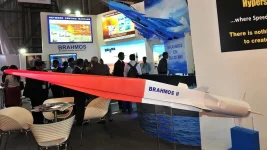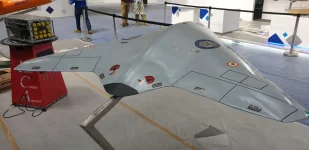- Views: 2K
- Replies: 23
India's Defence Research and Development Organisation (DRDO) is initiating efforts to secure vital technology for its next generation of submarines under Project-76.
As this significant naval program approaches final government approval, expected from the Cabinet Committee on Security (CCS) in the coming months, DRDO is actively searching for partners to help develop the marine diesel engines essential for these vessels.
Project-76 represents a major stride in India's naval capabilities, aiming to design and construct six advanced conventional diesel-electric submarines domestically.
A key objective set for DRDO is achieving an exceptionally high level of indigenous content, targeted at 90-95%. This goal makes long-term reliance on imported engines impractical beyond the initial phase, driving the need for a domestic manufacturing solution, likely involving a Transfer of Technology (ToT) agreement with an established international partner.
The technical demands for these engines are considerable. Each submarine will require two engines producing over 3,000 horsepower each. These engines must work seamlessly with other advanced systems like the Air-Independent Propulsion (AIP) and lithium-ion batteries, presenting a complex engineering integration task.
Furthermore, India currently lacks established expertise in designing and building high-performance marine diesel engines specifically suited for the demanding underwater environment, which requires exceptional reliability, endurance, and quiet operation for stealth. This differs significantly from the nuclear propulsion technology used in the Arihant-class submarines.
DRDO is currently evaluating potential collaborators both within India and internationally. While domestic companies such as Kirloskar Oil Engines, Cummins India, and Ashok Leyland possess experience with industrial diesel engines, none have previously developed marine propulsion systems of this scale and complexity.
Developing the necessary local supply chains and specialized workforce will require substantial time and investment, which must be carefully managed against the project's deadlines.
Project-76, which follows the successful Advanced Technology Vessel (ATV) program, is expected to receive CCS clearance around mid-2025, initiating a three-year design phase. Construction is anticipated to take approximately five years per submarine, with the first vessel projected to join the Indian Navy by 2033.
These submarines, estimated to displace 3,000-4,000 tons when submerged, will incorporate cutting-edge features including AIP for extended underwater endurance and potentially vertical launch systems for missiles.
Given the tight timelines and the challenge of developing a new indigenous engine, it is anticipated that the first two submarines built under Project-76 will likely be equipped with imported marine diesel engines.
Industry sources suggest that the German company MTU, known for its reliable MTU 4000 series engines used in submarines globally (such as Germany's Type 212A class), is a probable supplier for these initial units.
This approach would allow the Navy to begin inducting the new submarines in the early 2030s while parallel efforts continue to establish indigenous engine manufacturing capability for the subsequent vessels, fulfilling the long-term goal of self-reliance in this critical defence technology.



